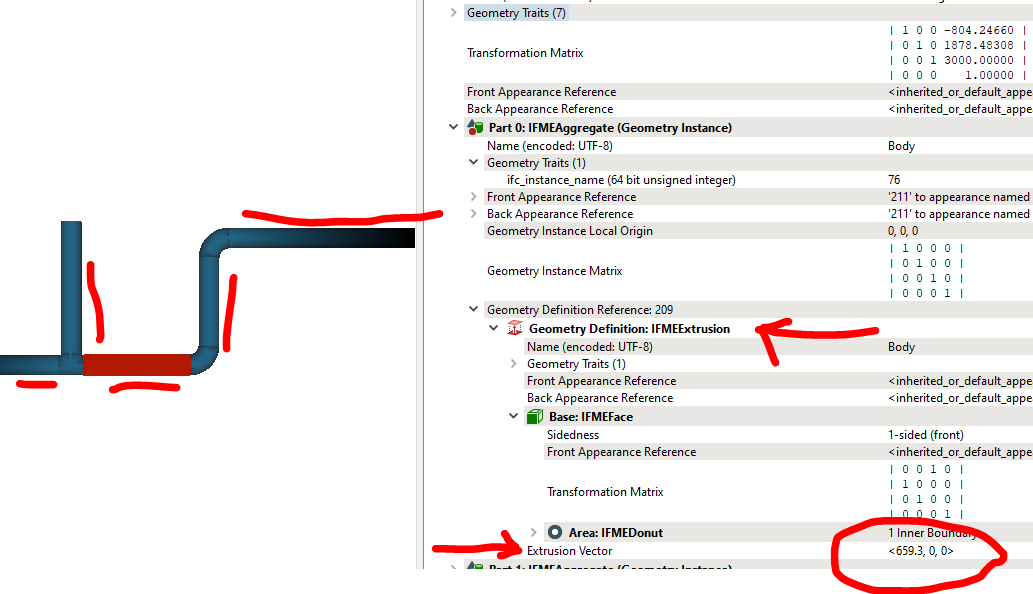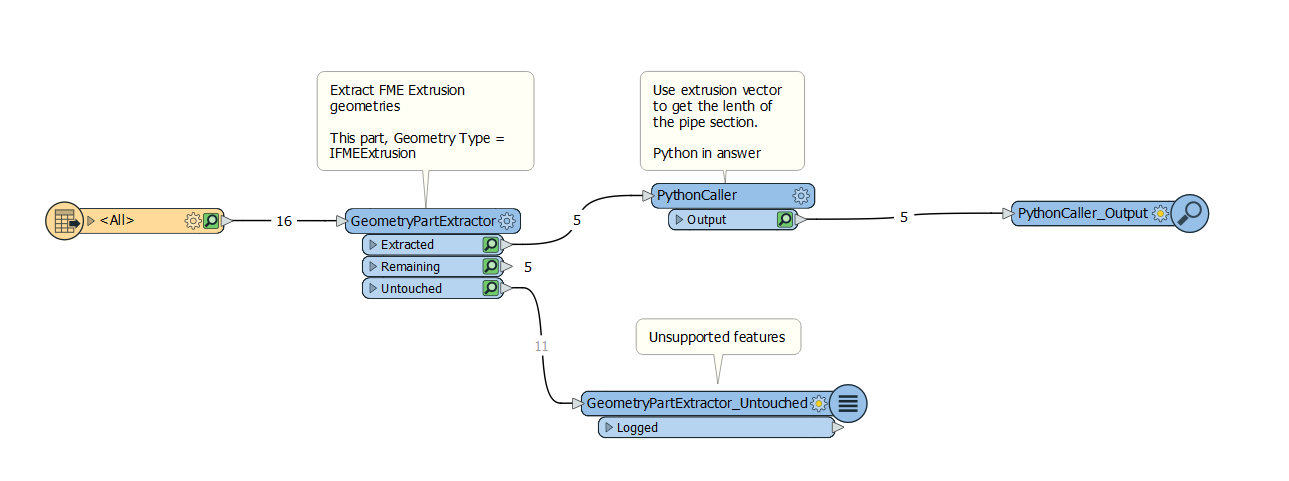Hi, fellow FME-lovers!
I have an interesting problem that you can help me solve in an efficient way.
I have many pipe segements as solids in an ifc-file, see example in Test2.ifc. The pipes are in 3D and can be connected in all directions. (I'm not sure about the fittings but for now don't mind them.). Now, I need to calculate length per segment and I started working no a complicated scripts (2D and algebra...) but there must be more of an FME-way. I'm thinking along the lines of creating a center line from pipe start to end...
If you have any ideas I will gladly listen.
Bonus: what if segments are bent? Will this be handled in you solution?
Peter
Best answer by virtualcitymatt
View original






 The downside is that there is no transformer to extract this, but fortunately there is some pretty simply python that can be used to get it and calculate the length.
The downside is that there is no transformer to extract this, but fortunately there is some pretty simply python that can be used to get it and calculate the length. The Pyhton Caller is used to extract the extrusion vector and create a _len attribute from it.
The Pyhton Caller is used to extract the extrusion vector and create a _len attribute from it.